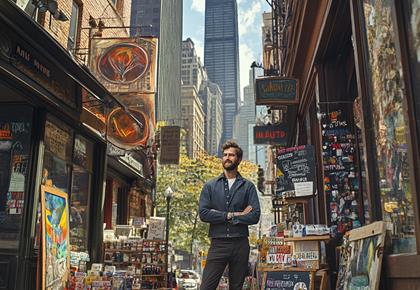Table of Contents
- Introduction
- Rolex Revenue
- Reinforcement in Brand Value and Quality Assurance
- Research and Development: The Hub of Innovation
- Marketing and Sponsorships: Crafting a Global Presence
- Employee Welfare and Training Programs
- Corporate Social Responsibility: Giving Back to Society
- Maintaining Exclusivity and Supply Chain Excellence
- Conclusion
Rolex
Rolex, a Swiss luxury watchmaker founded in 1905, is renowned for its timeless elegance, exceptional craftsmanship, and enduring quality. Known as a symbol of prestige and success, Rolex watches are distinguished by their iconic designs, such as the Oyster Perpetual, Submariner, and Daytona models.The brand has pioneered several innovations in watchmaking, including the first waterproof wristwatch and the first watch with an automatically changing date on the dial. Rolex maintains an unparalleled reputation in the luxury watch industry, combining tradition with technological advancements, and is celebrated for its commitment to precision, reliability, and excellence in every timepiece it creates.
Rolex, with its annual revenue in the billions, exemplifies a pinnacle of success in the luxury watch industry. This substantial income, a reflection of the brand's global prestige and demand for its high-quality timepieces, is thoughtfully allocated in various beneficial ways.
Rolex Revenue
- 2022 $8.3 billion
- 2021 $7.94 billion
- 2020 $7.9 billion
- 2019 $8 billion
- 2018 $6.3 billion
- 2017 $6.9 billion
- 2016 $5.9 billion
Reinforcement in Brand Value and Quality Assurance
Rolex, a name synonymous with luxury and precision, invests heavily in maintaining its brand value. This investment goes beyond marketing; it's about upholding a standard of quality that's been the brand's hallmark for decades. This includes state-of-the-art manufacturing processes, rigorous quality control, and continuous innovation in watchmaking technology.For instance, Rolex watches undergo rigorous testing, including the famed 'COSC' certification for precision and the brand's own stringent waterproof and accuracy tests, ensuring each piece meets the highest standards.
Additionally, the brand has maintained a consistent aesthetic and functional quality across its models, like the Oyster Perpetual's waterproof case and the Submariner's legibility under water, which have become benchmarks in watchmaking.
Rolex's sponsorships, such as supporting prestigious events like Wimbledon and the Open Golf Championship, align the brand with excellence and tradition, further solidifying its status as a symbol of unrivaled quality and enduring value in the luxury watch industry.
Research and Development: The Hub of Innovation
A significant portion of Rolex's earnings is reinvested in research and development. The company is known for its innovative spirit, evident in its numerous patents and industry firsts. For entrepreneurs, this underscores the importance of investing in innovation to stay ahead in a competitive market.A notable example is the development of the Oyster case in 1926, the world's first waterproof wristwatch case, a groundbreaking innovation that set new standards for watch durability.
In 1931, Rolex introduced the perpetual rotor, an early self-winding mechanism, demonstrating its commitment to advancing the functionality of wristwatches.
More recently, in 2005, Rolex developed the Syloxi hairspring, made of a silicon-based material, for its women's watches, showcasing their ongoing efforts in materials science to enhance watch precision and reliability.
These examples highlight Rolex's dedication to continually pushing the boundaries of what's possible in watchmaking, combining traditional craftsmanship with cutting-edge technology to create timepieces that are both timeless and technologically advanced.
Marketing and Sponsorships: Crafting a Global Presence
Rolex's marketing strategies are as iconic as its watches. With high-profile sponsorships in sports, arts, and exploration, the brand doesn't just advertise; it associates itself with excellence and achievement. This strategic positioning helps Rolex maintain its status as a luxury icon and drive sales.The long-standing association with prestigious sporting events,like in tennis (Wimbledon), golf (The Open Championship), sailing (Rolex Sydney Hobart Yacht Race), and motorsport (Rolex 24 at Daytona). These sponsorships are carefully chosen to reflect the brand's commitment to performance and precision, similar to the qualities embodied in its timepieces.
Additionally, Rolex extends its support to the arts, sponsoring leading institutions and events like The Royal Opera House and The Rolex Mentor and Protégé Arts Initiative. These sponsorships not only enhance the brand's prestige but also demonstrate Rolex's commitment to excellence and its support for endeavors that reflect its own pursuit of perfection and lasting legacy.
Employee Welfare and Training Programs
Investing in human resources is a key aspect of Rolex's expenditure. Rolex is known for valuing its employees, providing extensive training, and ensuring a high standard of work environment. This approach not only fosters loyalty but also guarantees a level of craftsmanship essential for a luxury brand.A real-world example of this is the Rolex Learning Center in Switzerland, a state-of-the-art facility designed for employee education and development. Here, Rolex invests in extensive training programs for its craftsmen and watchmakers, ensuring they master the intricate skills required for precision watchmaking.
The company also fosters a supportive work environment, offering competitive salaries, comprehensive benefits, and a strong focus on work-life balance. Additionally, Rolex places a high value on long-term career development, providing opportunities for advancement and personal growth within the company.
This holistic approach to employee welfare not only ensures the highest level of craftsmanship in its products but also cultivates a loyal and skilled workforce, integral to the brand's enduring success.
Maintaining Exclusivity and Supply Chain Excellence
Rolex's revenue also goes into maintaining its exclusivity. This involves controlling production numbers and ensuring a flawless supply chain. For startups, understanding the balance between demand and exclusivity can be crucial for positioning in the market.This exclsuivity is illustrated by its controlled production and distribution approach. For instance, Rolex produces a limited number of watches each year, despite high demand, ensuring each piece remains exclusive and retains its value. This exclusivity is further reinforced by a selective distribution network, where Rolex timepieces are only available through authorized dealers, maintaining the brand's prestige and avoiding market saturation.
In terms of supply chain, Rolex operates with a high degree of vertical integration, producing most components in-house in their state-of-the-art facilities in Switzerland. This control over the production process ensures unparalleled quality and precision in every watch.
By combining limited production, selective distribution, and meticulous quality control, Rolex not only preserves its exclusivity but also upholds its reputation for excellence in the luxury watch market.
Conclusion
Rolex's billions are an example of a well-oiled machine that balances quality, innovation, marketing, employee welfare, social responsibility, and supply chain mastery. Entrepreneurs and startup founders can learn from Rolex's approach to invest wisely, innovate continually, and build a brand that stands the test of time.
Early revenue is a liar. It tricks you into overspending, overhiring, and overestimating your success.
Learn why startups crumble in Year 2 — and how to stay alive.

What if the secret to scaling your startup isn’t about raising more funding, but unlocking the hidden goldmine already in your business? Uncover the hidden revenue streams hiding in plain sight.

Wonder how Trump’s takeover talk might unravel the Canal’s lucrative income stream? Brace yourself for potential ripples hitting everything from fuel prices to supermarket shelves

Steal like an entrepreneur (ethically)! Why reinvent the wheel when you can improve it? This approach saves you time, money, and countless headaches while keeping you ahead in the game.

Competing against businesses with larger budgets can feel like a David-and-Goliath battle. But the key to success isn’t about matching their spending — it’s about outthinking them.

Discover HEICO: The hidden aerospace jewel in Buffett's multi-billion-dollar portfolio!

